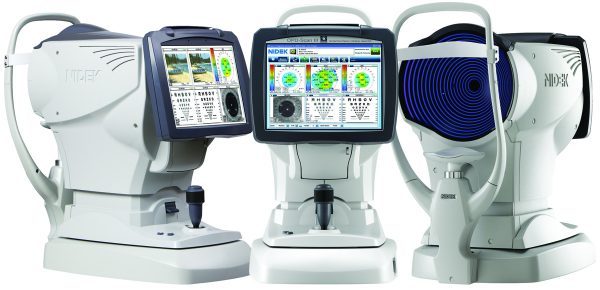
I purchased the original OPD-Scan 8 or 9 years ago, and upgraded to the OPD-Scan III in December 2014. The original OPD-Scan was an absolutely spectacular piece of equipment, and the OPD-Scan III was enough of an improvement that I thought it was worth my while to make the investment. After more than a year, I am confident that I was right.
Better Delivery of Information
The OPD-Scan III is clearly an improvement on what was already great technology. It provides much of the same useful information but in an improved format, and in an easier, more efficient manner. The OPD-Scan III has better resolution and interface, and provides useful, integrated summaries that weren’t readily available in the original model. For example, now my techs can easily obtain a cataract, cornea, diagnostic, or toric summary for me to review and make assessments.
Corneal Wavefront Integration
The ability of the OPD-Scan III to examine the corneal wavefront is a huge improvement, because it helps me to determine the best course of treatment, be it LASIK or cataract. It also helps provide an overview of the patient’s visual status and problems. Every LASIK or cataract evaluation patient has those scans done prior to me even walking into the room, so I have a vast amount of relevant information right in front of me. With better information, I am able to achieve better outcomes for both refractive and cataract patients.
Improved Decision Making
The OPD-Scan III makes my job much easier, and it helps me achieve the best possible outcomes. Let’s say, for example, a patient is in for cataract surgery. I can easily explain to the patient which lens I want to place based on the information that the OPD-Scan III provides. In addition, if I’m considering a multifocal IOL, I can evaluate the corneal wavefront aberrations and quickly make an educated decision as to whether or not the patient is a good candidate for a multifocal IOL, based upon the corneal aberrations that I’m seeing. Or, the information might help me realize the patient is a better candidate for a different lens. I can look at the topography and the regularity of the astigmatism in the corneal surface. The OPD-Scan III is also very good at helping to assess corneal astigmatism. I’m also able to help patients with less-than-perfect vision after cataract or LASIK procedures, whether performed by me or another physician, because data from the OPD-Scan III can help me figure out what is going on with the patient’s vision. It also allows me to see what astigmatism might be coming from inside the eye — either inside the lens and/or the posterior cornea. I have many referrals, complicated patients, or patients who are not seeing well after cataract or refractive surgery, and the ability to take all of these measurements and look at all of the various pieces of information often helps me identify the patient’s problem. This, in turn, helps me make a determination as to what is the right solution for the patient.

Technicians’ Seal of Approval
Because my technicians perform the tests with the OPD-Scan III, it is critical that my staff is proficient in using this technology. It is equally important to me that they like the equipment — and they do. My techs appreciate that the information from the OPD-Scan III is more detailed and the equipment is more user-friendly than the previous model; they have fully embraced its capabilities. And because the OPD-Scan III harvests more than 23 diagnostic metrics in 10 seconds per eye and provides so much integrated information, my technicians often will make a decision for a given patient as to what summary I might need, which is extremely helpful. Sometimes, I have to go back and ask for a different summary or scroll through different images, but that’s simply because there is so much information available at my fingertips if I need it.
An Office Favorite
If you’re looking to provide improved care for your cataract and LASIK patients, there is no question that the OPD-Scan III is worth the investment. The equipment is fantastic, and the customer service that Marco provides is remarkable. The support team comes in to help customize and set up the summaries that will best suit each office’s needs. They are always accessible and helpful. There are many pieces of equipment that I have and love, and I could probably get away with just using them. But I wouldn’t be seeing the whole picture concerning each patients’ optical path. With the OPD-Scan III, I can obtain the basic information — and so much more. There are so many things that this piece of equipment can illuminate for me, that I’m sure I haven’t even scratched the surface yet. It’s my favorite piece of equipment and I can’t imagine practicing without it.
– Dr. Horn specializes in cataract and laser eye surgery at Vision for Life in Nashville, Tenn.

